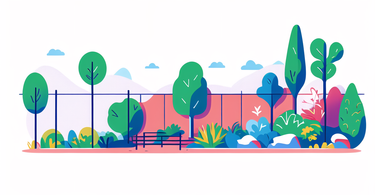Understanding the Impact of Zoning Laws on Garden Fence Design and Installation
Analyzing Recent Changes in Zoning Regulations
Recent changes in zoning laws have affected garden fence designs. New regulations may limit fence heights and materials. These changes aim to keep neighborhoods looking neat. They also protect the safety and privacy of residents. Homeowners should review their local zoning laws before building a fence. This ensures their design meets all legal requirements. Changes may vary by city or county, so local laws are key. Understanding these laws can prevent legal issues and fines.

The Importance of Compliance for Homeowners and Landscapers
Complying with local zoning laws is vital for both homeowners and landscapers. Ignoring these rules can lead to fines and legal issues. Each city or region sets its own fence requirements for material, height, and placement. Homeowners must check these laws before building a garden fence. Landscapers also need to stay informed to provide proper service to clients. This ensures their work meets legal and community standards. Non-compliance can result in costly penalties. So, always consult local zoning laws when planning a fence project.
How Zoning Affects Materials, Heights, and Aesthetics
Zoning laws vary by region, impacting garden fence design. They can restrict materials, colors, and finishes. Heights are also regulated, usually with a maximum limit to maintain sight lines. Aesthetics, such as the historical context, can influence fence style choices. It's vital for homeowners to check local codes before building. This ensures the fence is legal and fits within the community's look. Following the rules can avoid costs and legal issues later on.
Sustainability and Garden Fences: Adapting to Environmental Policies
Eco-Friendly Materials and Practices in Fence Construction
Eco-conscious fence construction is a growing trend. Here's how it's evolving:
- Using sustainable wood from responsibly managed forests for wooden fences.
- Embracing bamboo for a quick-growing, renewable fence option.
- Opting for composite materials made from a mix of wood fibers and recycled plastics.
- Employing local materials to reduce carbon footprints from transportation.
- Choosing natural treatments and stains to avoid toxic chemicals.
This approach not only helps with preserving the environment but also guides homeowners and landscapers towards a more sustainable future in garden fencing.
The Rise of Recycled and Upcycled Fencing Solutions
Recycling is vital in today’s garden fence market. More people use old plastics and woods for new fences. Metals from cars and tech also find new life as fence materials. Such upcycling can cut waste and costs too. It links gardens to the bigger goal of saving our planet. Gardeners favor these recycled options more and more. They add unique style to yards while being earth-friendly. Recycled fences also stand well against weather and time. This trend is now a big part of the fence industry's future.
Complying with Environmental Standards for Garden Fences
Meeting environmental standards for garden fences is critical today. As rules get stricter, choosing the right materials matters more.
Fences must now be both sturdy and eco-friendly. This means using less plastic and more sustainable wood or bamboo. In some areas, fences might also need to be wildlife-friendly.
Homeowners and landscapers must keep up with local eco-guidelines. It's not just about the look anymore, but also the fence's green footprint. When in doubt, seek expert advice to ensure compliance.
Technological Advancements in Garden Fence Manufacturing
Innovations in Material Durability and Longevity
Garden fences must stand up to weather and time. Now, new materials make this easier. These include composites that resist rot and pests. Even metals are seeing upgrades, like rust-proof coatings. These advances mean fences last longer with less upkeep. Homeowners benefit from savings over time. Fence makers are also exploring eco-friendly options. They create durable fences without harm to the environment. Such innovation is key to a sustainable future in fencing.
Smart Fences: The Integration of Technology in Garden Fences
As garden fencing evolves, 'smart fences' are emerging. These high-tech barriers blend security with convenience.
- They can link to home automation systems.
- Users can control them via smartphones or tablets.
- Sensors alert homeowners to possible intruders.
Future fences may even self-repair or change color. The aim is to enhance garden safety and aesthetics. Meanwhile, they must stay user-friendly. The smart fence trend is set to grow, reshaping garden boundaries.
Automation and Robotics: The Future of Garden Fence Installation
The future of garden fence installation is changing fast. Automation and robotics are at the front of this shift. These technologies make installations quicker and more precise. They also reduce manual labor and boost safety. Here is how they are shaping the industry:
- Robotic Assistance: Robots that can measure and position fences are being developed. This cuts mistakes and speeds up the fencing process.
- Automated Tools: Machines that automate drilling and fixing fences save time. Workers can focus on other tasks as machines handle repetitive actions.
- Drones for Surveying: Drones map out the area fast. They give a clear view for planning fence lines. This helps avoid errors and rework.
- Software for Design: With new software, designs are more exact. Also, it's easier to plan around local zoning laws.
- Safety Systems: Automation includes safety features. These prevent accidents during installation. The shift to automated garden fence installation is clear. This will lead to faster, safer, and more efficient fencing projects.
